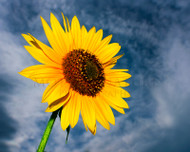Judith's Tips for Photographing Flowers
Posted by Judith Kimbrell on 15th Mar 2018
10 BEST TIPS
1. Use a tripod. Focus is very critical when performing close-up or macro photography. And the closer you get, the more you magnify the subject and every flaw caused by camera movement. By using a tripod you can ensure a focused image. Tripods help to keep the correct distance from the subject to retain focus, as well as prevent camera shake.
2. Focus is critical. Besides using a tripod, I suggest keeping the entire image in focus if you are new to photography. This means using a small aperture, such as f/22 or f/32. Selective focus can also be used (only having sharp focus on part of the image). However, even when using selective focus, sharpness is still critical. Purposely select your main point of focus - this is usually the most important item in the frame (the top flower, the center of the flower, the bee on the flower, etc...) - and make sure your main subject is in focus.
3. Choose plants and flowers that are well shaped and healthy. No sense wasting your time on distressed flowers. If the flowers are too distressed move on to another grouping. If your flower only needs a little pruning to improve your shot, don't be afraid to take a distressed petal off. Removing "bloomed out" buds actually improves the health of the plant and may force the plant into a second blooming cycle.
4. Use appropriate lighting. This is tricky when flowers are concerned. Light quality may vary depending on your goal.
- Diffused lighting if often appropriate for flower petal details. This helps to create a soft and romantic quality to your images. Using selective focus also increases the delicate feel to the image. (As seen in this pink cosmos flower.)
- Direct hard light increases saturation of color - great to bring out the vibrancy of flower petals. It also brings out the texture of veins, folds, and pollen on flowers and leaves. (As seen in this peony flower.)
- Backlighting (the light is directed toward the camera) your subject will show texture, such as the petal veins in this Hollyhock example. It might also bring a heavenly glow to your flowers. The biggest issue with backlighting is to either avoid lens flare completely, or use it intentionally.
5. Bring lighting equipment into the field. Don't be afraid to try a little fill flash or 5-in-1s to light your flower when outdoors. Sometimes nature needs a little help.
6. Be aware of wind. Again, using macro techniques intensifies flaws in your image. Even the slightest breeze will move your flowers when shooting outdoors. And movement of a millimeter may completely change your focus. Obviously, the best case scenario is to shoot on non-windy days unless you wish to create a chaotic feel to your image. If it is a windy day, try to wait for the wind to calm before making the image. One advantage of flowers is that they are small. You can often build a wind block to stop unwanted breezes.
7. Pay attention to your backgrounds. Often, I take students to greenhouses to photograph flowers. Unfortunately, I've lost count of how many shots I've seen from students which include unattractive flower tags, peeling fences, hoses, and so forth. Look at the whole image in your viewfinder and pay attention to your backgrounds. Remove tags (but put them back when you are done), move hoses, or simply change your angle to avoid unwanted items.
8. Vertical compositions are often helpful when attempting to convey energy and height of the subject.
 9. Don't be afraid of the bees! As a child I refused to garden with my mother because I was terrified of being stung. Unfortunately, bees are a part of nature and they love flowers. If you can't beat them, join them (or at least incorporate them into your photos). Oh course, now you have to watch for yet another item. Make sure your insect has its wings in the perfect position with its body turned slightly. And make sure the insect is in perfect focus!
9. Don't be afraid of the bees! As a child I refused to garden with my mother because I was terrified of being stung. Unfortunately, bees are a part of nature and they love flowers. If you can't beat them, join them (or at least incorporate them into your photos). Oh course, now you have to watch for yet another item. Make sure your insect has its wings in the perfect position with its body turned slightly. And make sure the insect is in perfect focus!
10. Bestselling photos often include flowers that everyone loves. My top selling images are sunflowers and roses. Also, make sure to stack your portfolio with popular local and regional flowers. In Colorado, this includes columbine, fireweed, lupine, and paintbrush.




